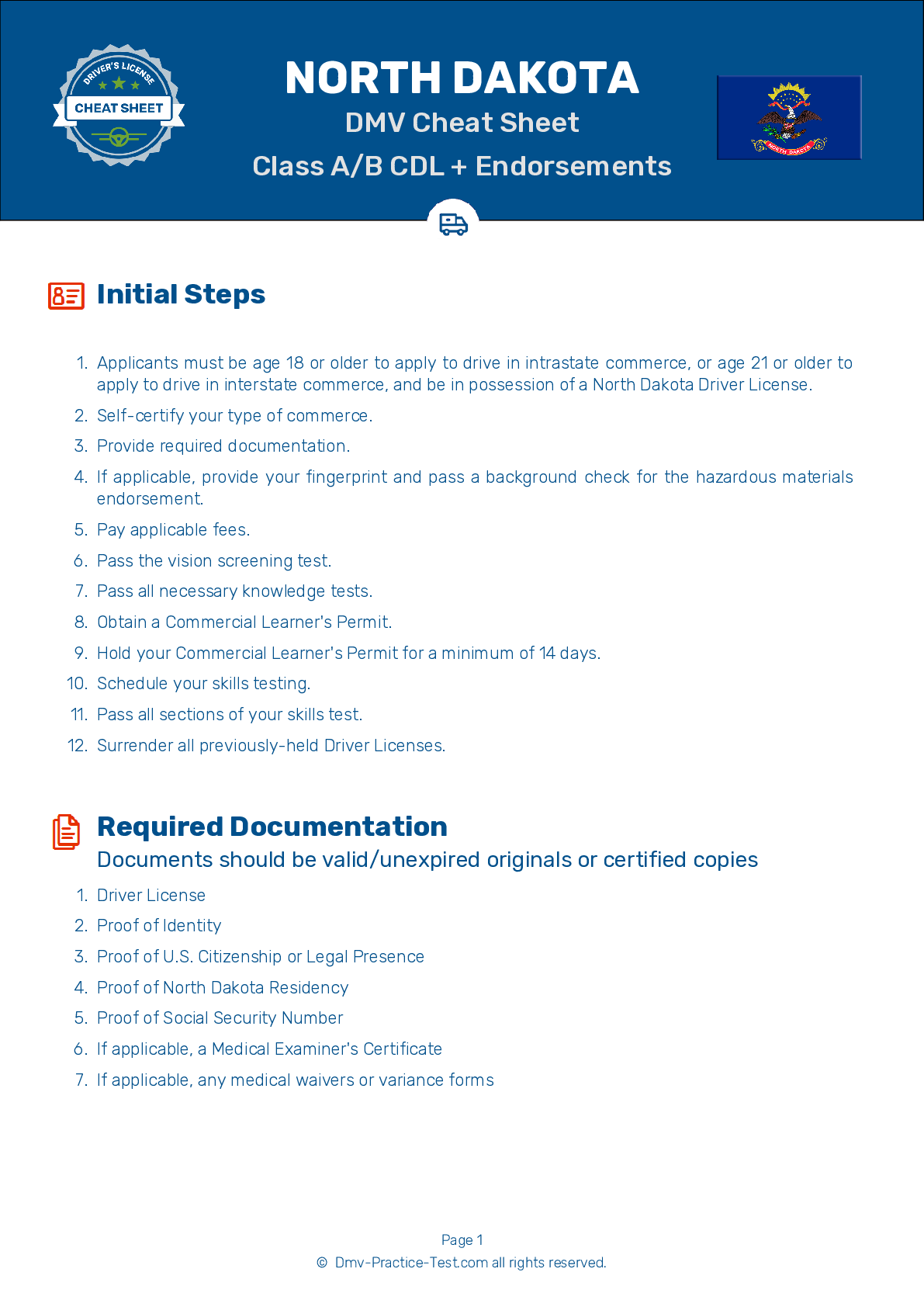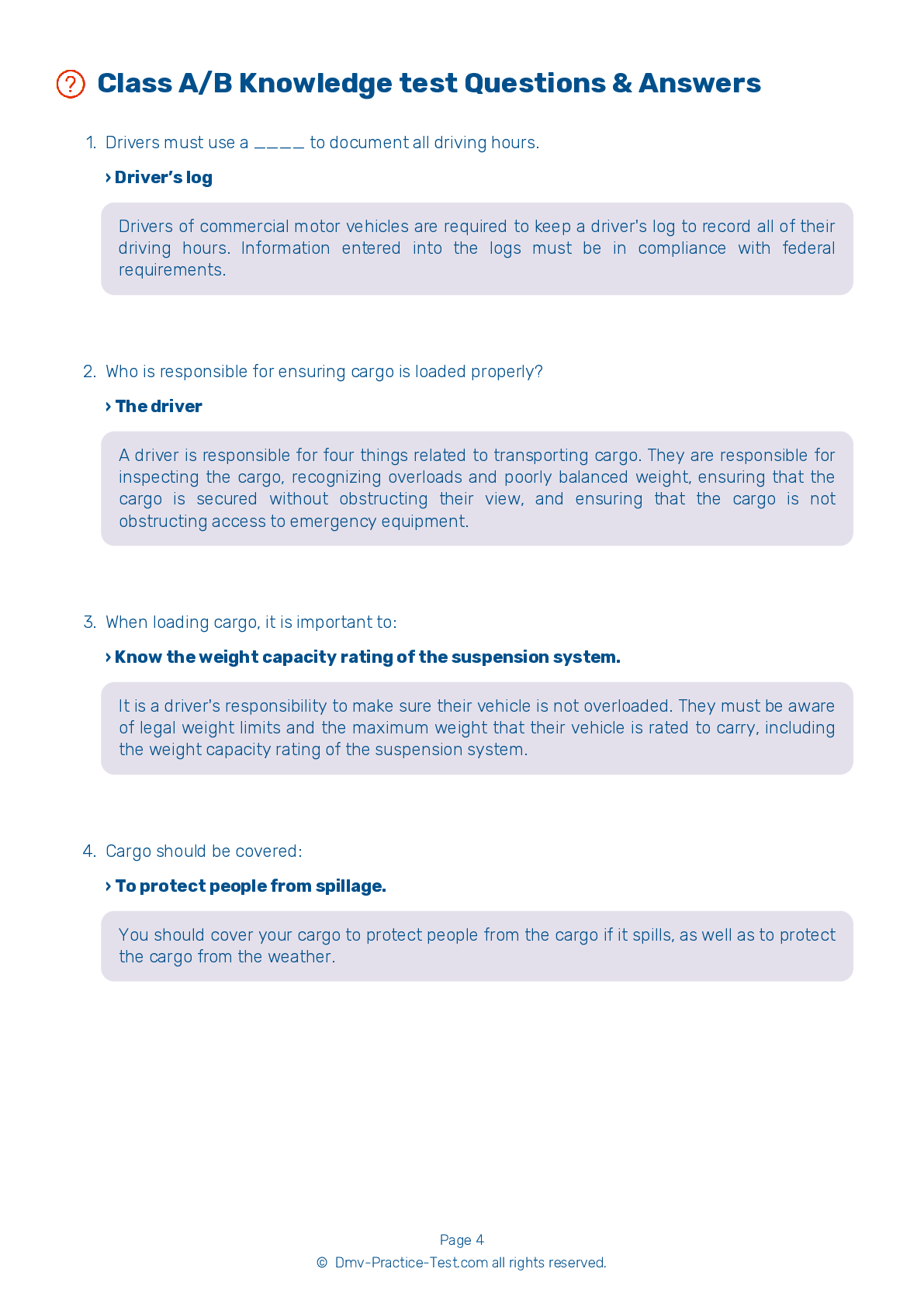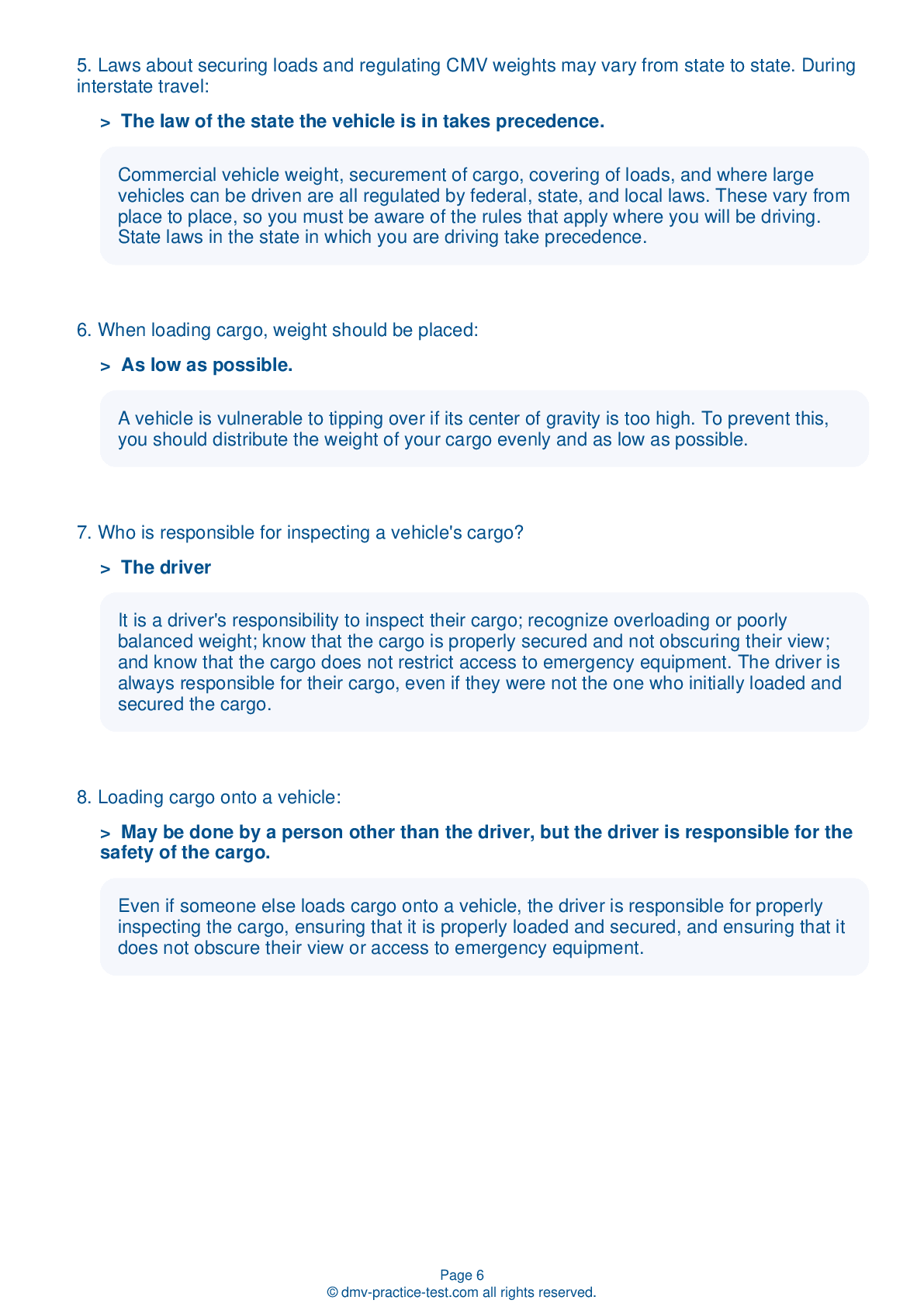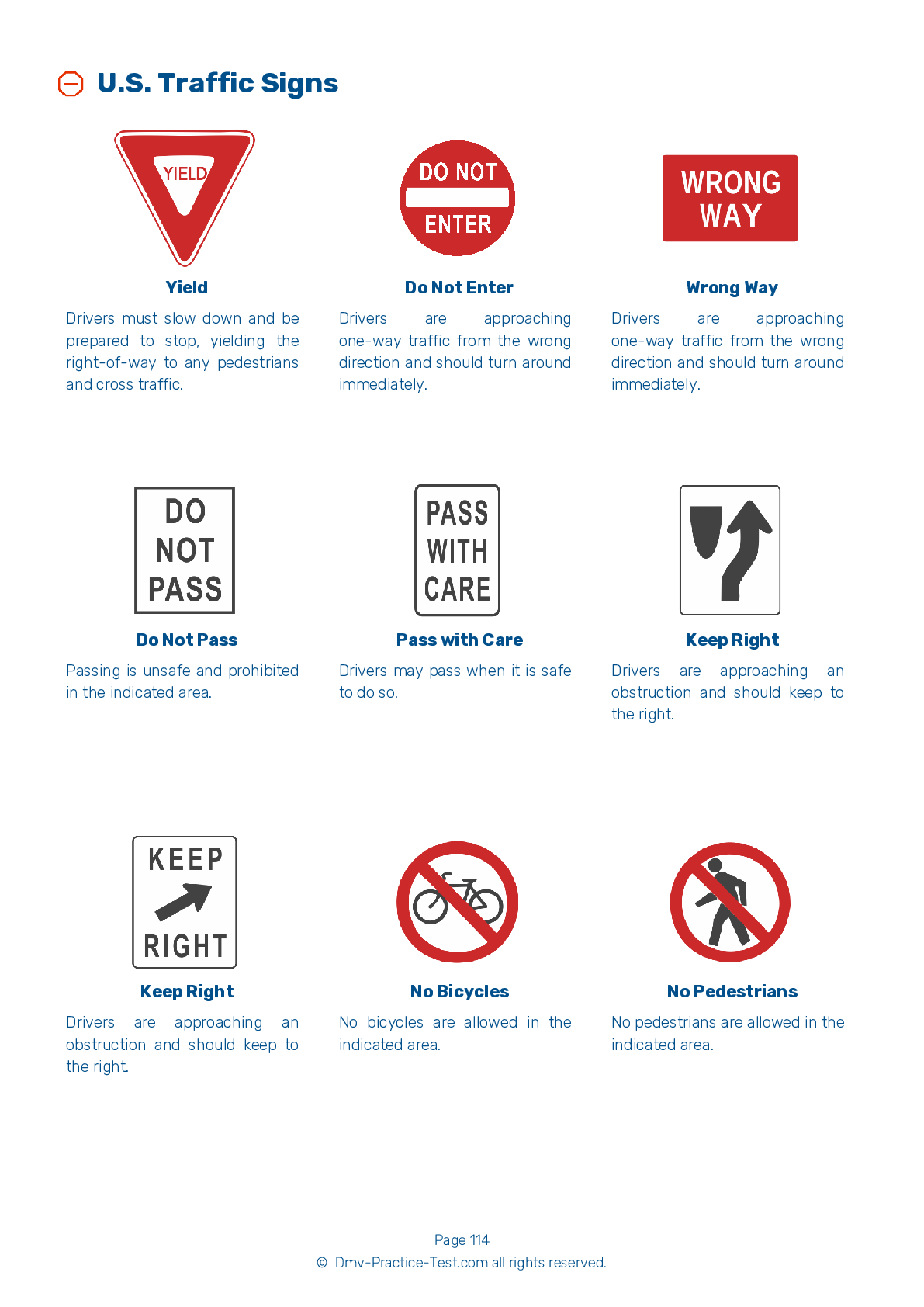Combination #2
Combination Vehicles Practice Test | North Dakota 2025 #2 Page 3 of 3
Train for FREE online with our North Dakota CDL combination vehicle test. The official exam test consists of several obligatory parts, with all of them checking your knowledge of different blocks of road rules. If you need to obtain a ND combination license in 2025, practice as much as possible. Free sample tests published on our website will help you check and improve your knowledge and boost your grades. Please bear in mind that DMV requirements for issuing a combination license may vary from state to state.
20
16
20
15 . Rollovers happen when drivers:
Drive illegally.
A rollover happens as a result of a driver taking a turn at too high a speed. Be sure to take turns and curves safely and slowly.
16 . In a double or triple combination:
The weight of the trailers does not matter.
When positioning trailers in a combination, the most heavily-loaded trailer should be the closest to the tractor. The lightest trailer should be positioned in the rear.
17 . When uncoupling a trailer, landing gear should be:
Firmly on the ground.
Landing gear, or trailer supports, should always be completely raised before a vehicle is driven. When uncoupling, landing gear should be lowered to make firm contact with the ground. If a trailer is loaded when it is being uncoupled, you should lower the landing gear and turn the crank a few additional times to remove some weight from the trailer.
18 . Starting in which year were newly manufactured trailers required to have ABS?
2004
All trailers and converter dollies manufactured on or after March 1, 1998 must be equipped with Anti-Lock Braking Systems (ABS).
19 . A loss of air pressure in the emergency line will cause:
The emergency brakes to activate.
The emergency air line controls the emergency brakes on a combination vehicle. A loss of air pressure in the emergency line will cause the emergency trailer brakes to activate.
20 . Push in the trailer air supply control to:
Supply the trailer with air.
Push in the trailer air supply control to supply the trailer with air. Pull out the trailer air supply control to turn off the air supply and activate the emergency brakes.
2025 North Dakota | Frequently Asked Questions
In North Dakota, a Commercial Driver's License (CDL) Class B permits drivers to operate single vehicles with a Gross Vehicle Weight Rating (GVWR) of 26,001 or more pounds, or any such vehicle towing another not in excess of 10,000 pounds. This includes buses, farm labor vehicles, and any vehicle designed to transport 16 or more passengers including the driver.
A Class B CDL license in North Dakota allows the holder to operate single vehicles with a Gross Vehicle Weight Rating (GVWR) of 26,001 or more pounds, or tow a vehicle not exceeding 10,000 pounds. This includes large passenger buses, segmented buses, straight trucks, and dump trucks with small trailers.
To acquire a Class B CDL license in North Dakota, you must be at least 18 years old (21 for interstate driving), possess a valid North Dakota driver's license, pass a vision test, and successfully complete both a written knowledge test and a skills test, which includes a pre-trip vehicle inspection, a basic controls test, and a road test. You also need to pass a medical examination.
In North Dakota, you must be at least 18 years old to qualify for a Class B CDL license. However, if you intend to drive commercially across state lines (interstate driving), federal regulations require that you be at least 21 years old.
While a Class B CDL license in North Dakota allows you to operate a single vehicle weighing over 26,000 pounds, specific endorsements may be required for certain types of vehicles or cargo. For instance, a passenger endorsement is needed for vehicles designed to carry 16 or more passengers, and a hazardous materials endorsement is required for transporting hazardous materials.
The Class B CDL skills assessment in North Dakota consists of three parts: a pre-trip vehicle inspection to test your ability to assess if the vehicle is safe to drive, a basic controls test to evaluate your ability to control the vehicle, and a road test to measure your on-road driving skills, including turning, merging, and navigating intersections.
Yes, Class B CDL license holders in North Dakota are limited to driving single vehicles with a GVWR of 26,001 or more pounds, or towing vehicles not exceeding 10,000 pounds. They cannot drive a tractor-trailer combination. Additionally, without specific endorsements, they cannot drive vehicles carrying hazardous materials or more than 15 passengers.
In North Dakota, the written Class B CDL test is primarily administered in English. However, some testing centers may offer the exam in other languages. It's advisable to contact your local Department of Transportation office to inquire about available language options for the test.
Yes, North Dakota Department of Transportation provides accommodations for individuals with disabilities taking the Class B CDL written exam. You must provide documentation of your disability and specify the type of accommodation needed. It's recommended to make this request well in advance of your scheduled test date to ensure proper arrangements can be made.
Yes, if you do not pass the Class B CDL written test in North Dakota, you can retake it. However, you must wait at least one day before retaking the exam. There's no limit on how many times you can retake the test, but each attempt requires a new test fee. It's recommended to study thoroughly before retesting.



